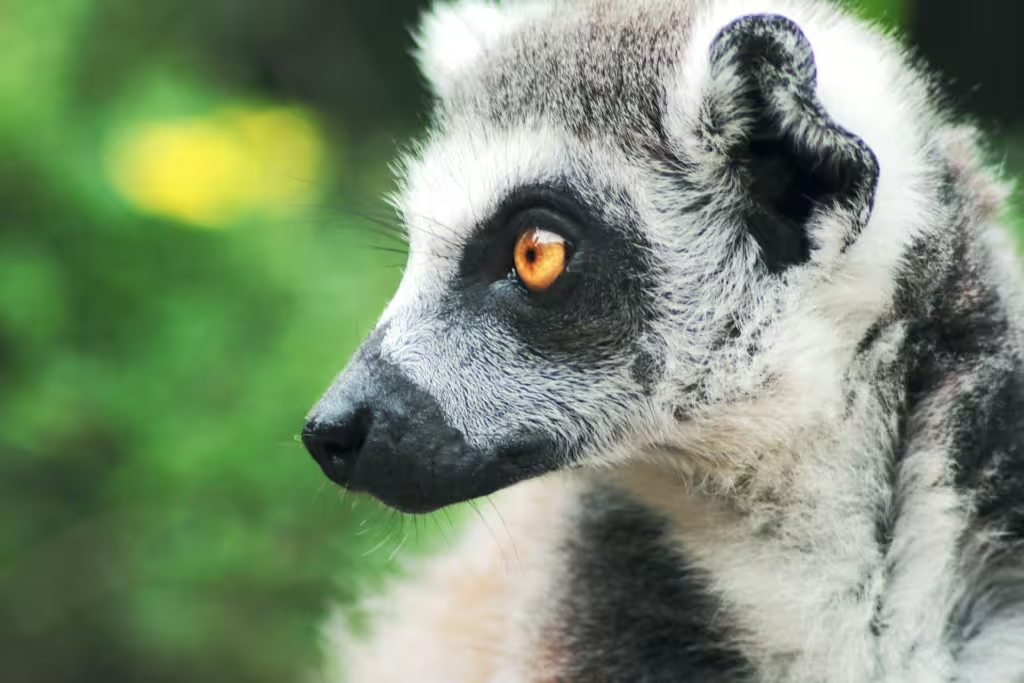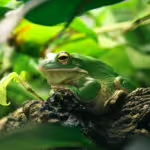In nearly every tropical rainforest on the planet, some form of arboreal primate swings amidst the upper branches of the canopy. There are many such primates out there, gibbons in Southeast Asia, capuchins in South America, and bonobos in the Congo. All of these animals are unique and captivating in their own special way, but arguably, the most remarkable subspecies of primate in the entire world can be found in one place on the planet; Madagascar.
Hidden deep within the forests of the island that is Madagascar, dwell the lemurs. These primates represent one of the most distinctive branches (pun very much intended) of the primate evolutionary tree. Wide-eyed, bushy-tailed, highly-social, and exceedingly intelligent, this family of mammals is not only adorable—it is ancient. Lemurs are the last remaining survivors of a lineage that diverged from the rest of the primates, ourselves included, some tens of millions of years ago.
They settled on Madagascar, of all places, because the island split from the African and Indian subcontinent around 160 million years ago. This forced seclusion of the lemur line allowed it to evolve in a host of fascinating ways. Physical adaptations and behavioral traits, unseen in many other primates, wove their way into the lemur gene. Theirs is a story of evolution, isolation, and survival that bears much investigation.
In this article, we will explore this story in great detail. We will talk about the different ways that the isolated lemur populations of Madagascar evolved and how those specific adaptations allowed them to occupy a number of unique niches within the island’s ecosystems.
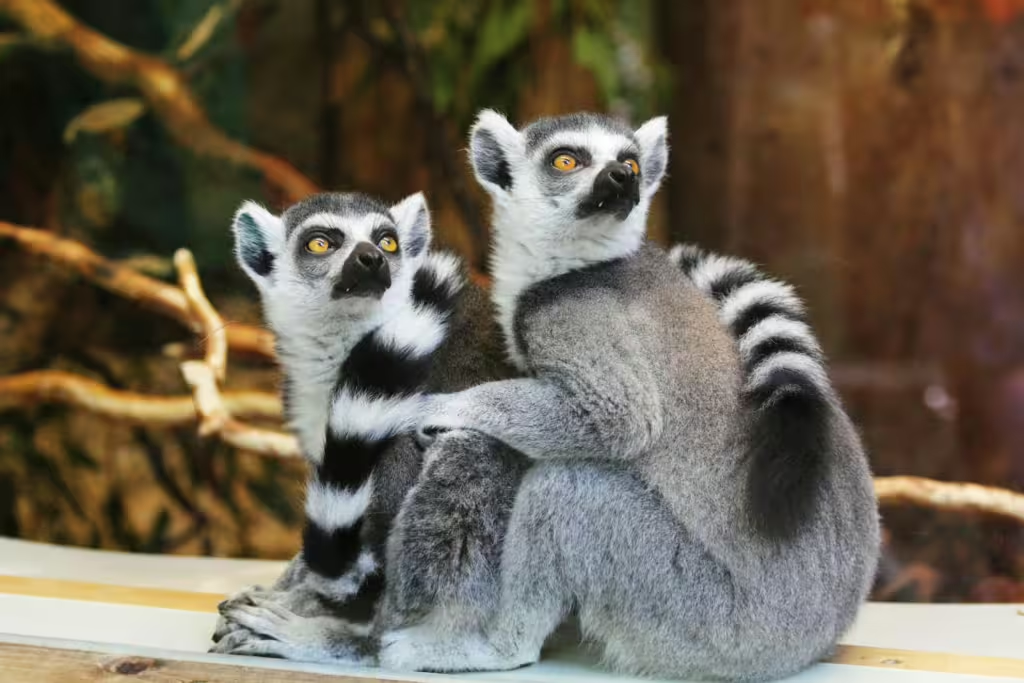
Lemurs: A Primate Apart
Alright, so we should be clear about the nomenclature here. Lemurs are primates, yes, but they are specifically part of a suborder called prosimians. These “pre-monkeys” as they are sometimes known, include lorises, such as the slow loris, and galagos. These animals are all part of a suborder called Strepsirrhini.
Current scientific thinking believes that lemurs first arrived in Madagascar by accident, roughly 50 to 60 million years ago. The inkling is that they rafted across the Mozambique Channel on mats of vegetation and wound up landlocked on the island. At the time of their arrival, Madagascar had no other primates and few terrestrial predators—two conditions that allowed lemurs to evolve without any outside interference. Today, there are more than 100 recognized species of lemurs, each one occupying its own ecological niche on the island.
Some lemurs are small, like the tiny mouse lemur, which can fit in a human hand, and some are quite large, such as the tall, boisterous indri. Then there are nocturnal lemurs, like the aye-aye, which evolved a specific means of searching for food and tools for getting that food out of trees. The interesting thing is that this variety of lemurs all stems from a single ancestral species. This method of evolution is known as adaptive radiation, and it involves a single species evolving into many forms in order to occupy different environments within the same ecosystem. Darwin’s finches on the Galápagos Island chain show a similar style of evolution and adaptation.
Clever Critters: Behavioral Strategies For Survival
Social Structures and Communication
All over the island of Madagascar, lemurs exhibit a wide range of social behaviors. Many of these behaviors are actually quite uncommon in other primates. For example, where many primate troops follow a male leader—gorillas, chimpanzees, baboons, and the like—most lemur species are matriarchal. In lemur culture, females dominate males, not only in the social hierarchy. They get first access to food and get to determine their own mates. This structure is especially pronounced in the most famous lemur of them all; the ring-tailed lemurs. Scientists believe that female dominance may have evolved as a strategy to cope with Madagascar’s unpredictable seasons and its limited resources. As in elephants and other matriarchal social structures, females tend to live longer, so females being in charge essentially means that the eldest, most experienced members of the group guide its survival strategies.
Communication is also key among lemurs, just as it is with many types of primates. Lemurs have vocal calls that warn of predators and “speak” to one another in ways that help maintain group cohesion. Some of those speeches happen without words, as ring-tailed lemurs have been known to use visual signals like tail-raising or body posture to signal their fellows. They also rely heavily on olfactory cues by utilizing their scent glands to assert dominance, comfort others, or find a mate.
Some lemurs like it loud, however. The two-foot tall indri, for instance, are known for their long, haunting calls that can carry for miles through dense forest. These vocalizations are used for both mate bonding and territorial defense. Moreover, each indri group has its own types of calls, allowing them to find their family even amidst the cacophony of the Madagascar rainforest.
Nocturnal and Diurnal Adaptations
The limited resources on the island have forced lemurs to split the day between different species. Some species are diurnal, which means they are most active during the day, while others are nocturnal or cathemeral; this means they are active at irregular intervals throughout day and night. Nocturnal lemurs, like the aformentioned aye-aye, have large eyes and sensitive hearing to navigate the dark forest. They rely on touch and sound, two factors that make them quite adept at nighttime foraging.
Diurnal lemurs, like the sifaka, can see far better in the daylight. Their color perception makes them far more suited for daytime foraging than trying to feel around in the darkness. This variation in activity periods, is known scientifically as temporal niche partitioning, and it helps reduce interspecies competition. The upshot is that it allows many types of lemurs to coexist in the same forest without directly competing for the same food or even the same living space.
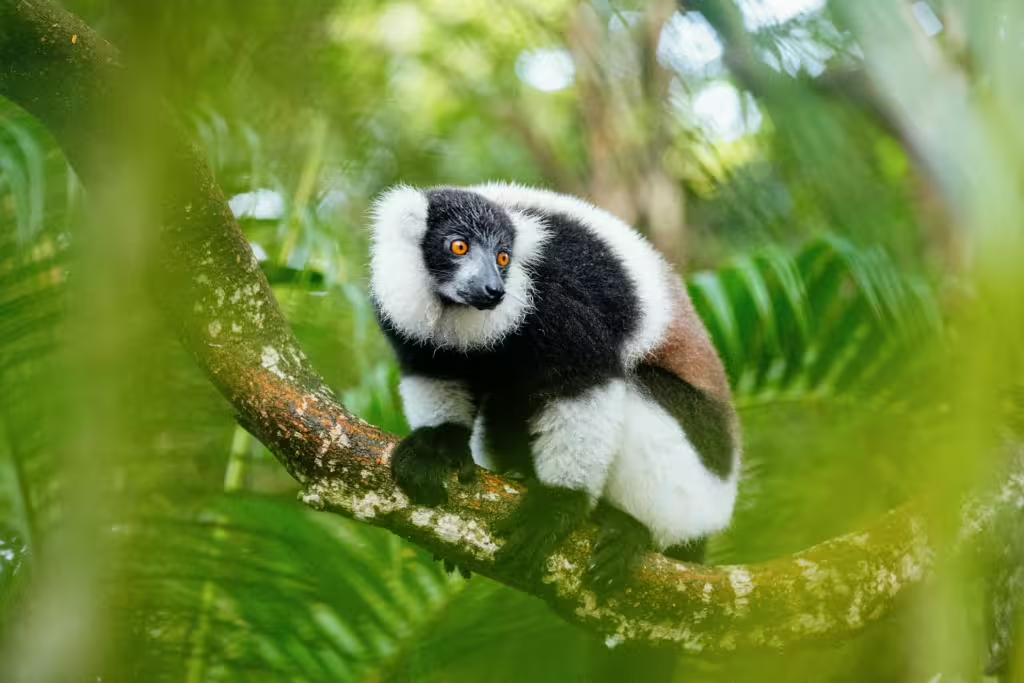
Limbs, Leaps, and Locomotion: Physical Adaptations
How Lemurs Move
Lemurs, like most primates, are fairly adept at leaping, climbing, and otherwise ambulating through the trees. Nevertheless, the lemurs of Madagascar exhibit a wide variety of locomotion styles adapted to their specific biomes within the vast and varied island ecosystem. Sifakas are vertical clingers and leapers, possessed of strong hind limbs and long tails for balance. They are so physically adapted to arboreal life that they can move upwards of 30 feet between tree trunks in a single leap. Conversely, ring-tailed lemurs spend much more time on the ground and walk about on all fours rather than upright.
Unique Diet and Dentition
Lemur diets have also been greatly influenced by the unique flora of the island, specifically in the area of dentition. The teeth of Madagascar’s lemurs are as varied as the species themselves. The bamboo lemur, like the giant panda, feed exclusively on bamboo. Not only are their teeth designed to crunch up the tough leaves and stems of the plant, their digestive process also enables them to detoxify the cyanide compounds that can be found in bamboo. This is partly due to their gut micro bacteria, which help to neutralize the cyanotic toxins, making the bamboo lemur a prime example of how co-evolution can exist between a species and its microbial partners.
Madagascar Itself: Evolution in Isolation
While Madagascar’s isolation for the past 88 million years has made it a living laboratory for evolution, it has also made it vulnerable to the machinations and callous greed of another, far more destructive primate; human beings. Lemurs once had free reign to diversify across the island, but the highly-specialized nature of their existence has meant that they are highly-sensitive to disruption. Even the loss of a small pocket of forest or swath of desert land can spell doom for a specialized animal.
The combination of habitat loss, hunting, and climate change are all human-derived factors that have managed to threaten nearly all lemur species. Even with awareness and international efforts to stop some of these practices, the already decimated populations of Madagascar lemurs still live in constant threat of slash-and-burn agriculture, illegal logging, and charcoal production. These terrifying and destructive practices have already ravaged millions of acres of native forest. According to the IUCN, nearly 90% of lemur species are listed as endangered or critically endangered.
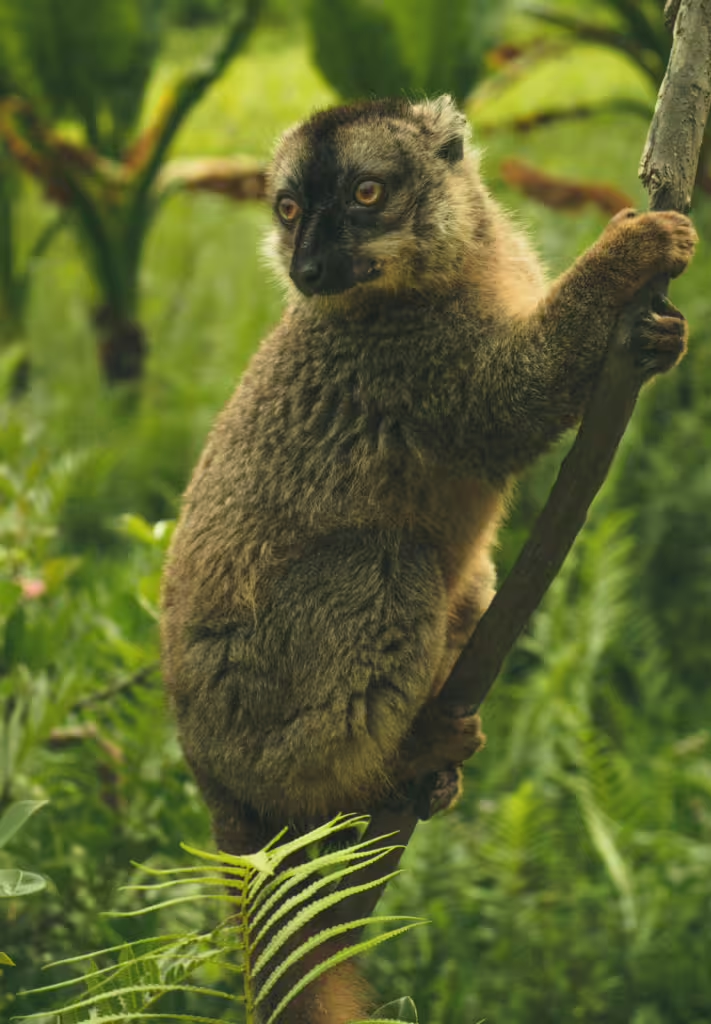
True Investigator Says…
As you can see, lemurs are absolute marvels of adaptation. These primates are the product of millions of years of evolution and specialization. Sadly, the same isolation that made them so remarkable has also put them in grave danger. The sad truth is that, without organizations like the Lemur Conservation Foundation, the amazing tale of the Madagascar lemurs will undoubtedly come to a swift and sorrowful end. Those in Madagascar and beyond are doing what they can to raise awareness and stop habitat destruction, but they need help and activism to bolster their efforts. If we don’t do all we can to help, the lemurs will surely disappear, and so will their inspiring tale of evolution at its ansolute finest.
Discover more from TrueInvestigator
Subscribe to get the latest posts sent to your email.
